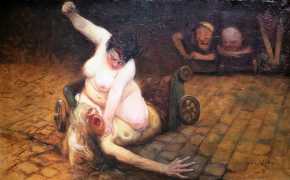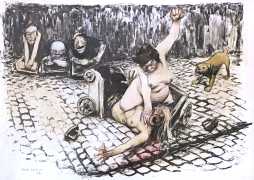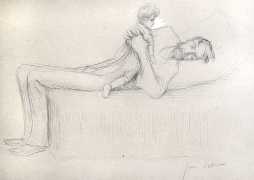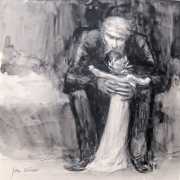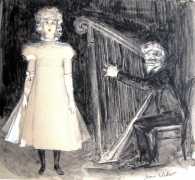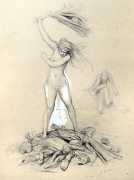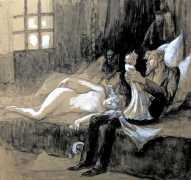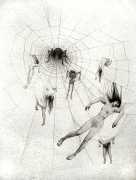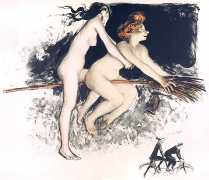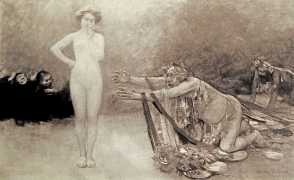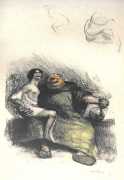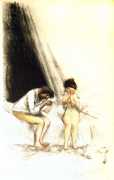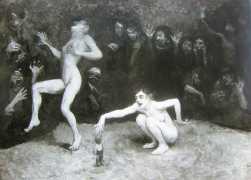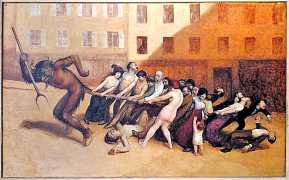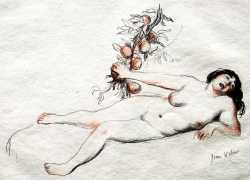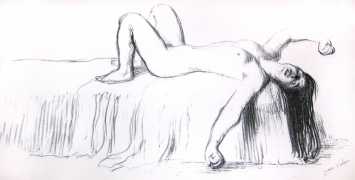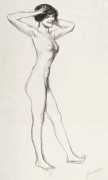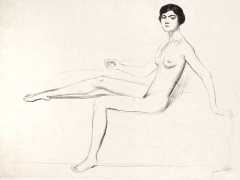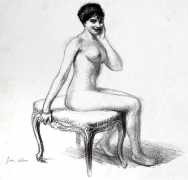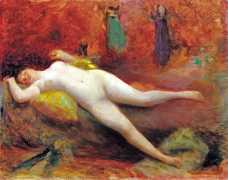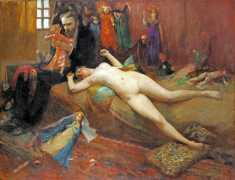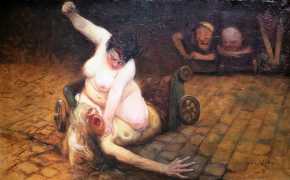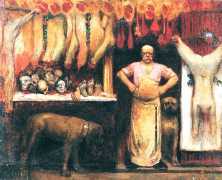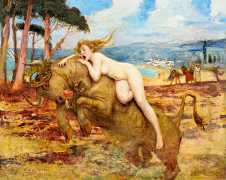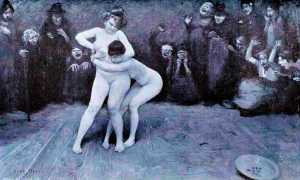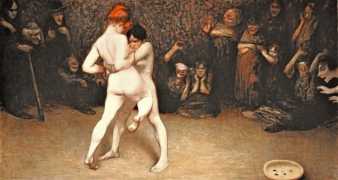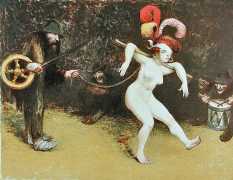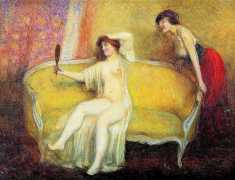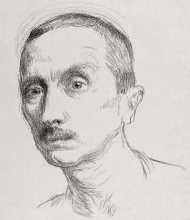 In many ways a century ahead of his time, the French painter, engraver and caricaturist Jean Veber had the talent, the imagination and the courage to depict subjects that others only imagined or kept to themselves. Social, political and sexual hypocrisy regularly engaged his graphic skills, and he also had an obvious interest in sexual themes that would appear later in Hans Bellmer’s dolls, Milo Manara’s female Gulliver, and the women wrestling naked who appear regularly today on porn sites.
In many ways a century ahead of his time, the French painter, engraver and caricaturist Jean Veber had the talent, the imagination and the courage to depict subjects that others only imagined or kept to themselves. Social, political and sexual hypocrisy regularly engaged his graphic skills, and he also had an obvious interest in sexual themes that would appear later in Hans Bellmer’s dolls, Milo Manara’s female Gulliver, and the women wrestling naked who appear regularly today on porn sites.
Veber grew up in Paris and trained at the Beaux-arts (National School of Fine Arts) as a painter under Jules-Élie Delaunay and Alexandre Cabanel. He became an illustrator when his brother Pierre urged him to join the staff of the newspaper Gil Blas, where the two brothers worked under the joint pseudonym Les Vebers. In 1893 he became interested in lithography and quickly achieved mastery of the technique. He created his first lithographs to illustrate the score of Thaïs by Massenet, at the request of the publisher Heugel.
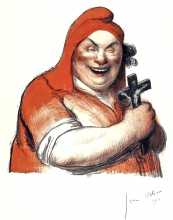
Around the turn of the century he became known for his genre scenes, often treated satirically, which sometimes became paintings. His keen political and social sense regularly resulted in controversial depictions of political figures and social institutions. In 1897 a drawing depicting Otto von Bismarck as a butcher of his own people caused a major scandal, while organised religion represented by a matron clutching a crucifix, and the arbitrary power of the British Empire depicted in a backside view of King Edward VII, were typical of his output. The matron with the crucifix is Marianne, the personification of the French Revolution, recognisable by her red ‘liberty cap’ – what Veber was calling attention to in this drawing was the interference of organised religion in political affairs.

In 1914, at the age of fifty, he enlisted in the French army and was posted to Lorraine; his experience inspired powerful images relating scenes of combat. He experienced the ordeal of mustard gas, as a result of which he was demobilised in 1918, and died ten years later as a result of his poisoning, leaving a highly intelligent and very personal body of work.

